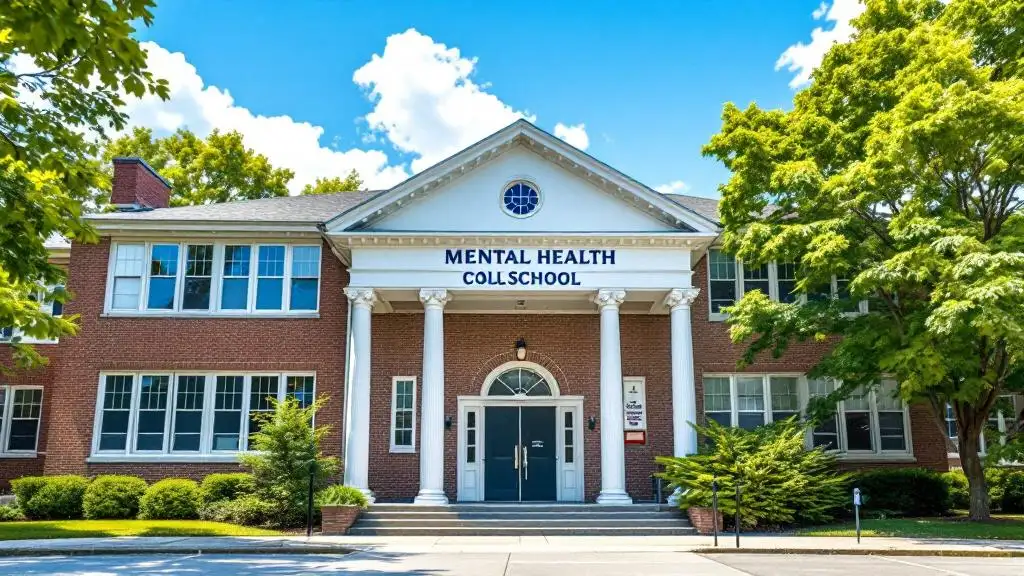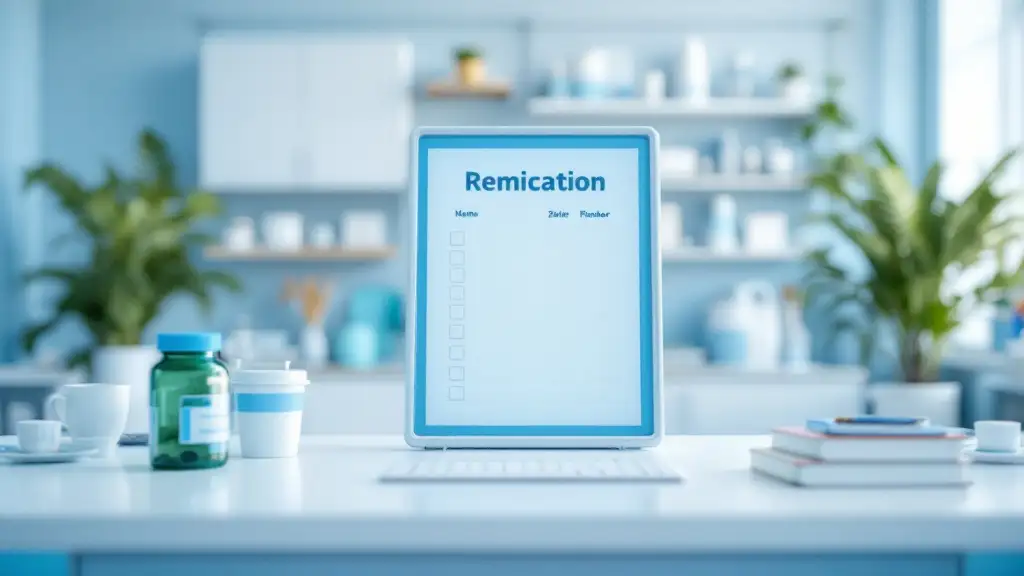Understanding and Managing Trauma Flashbacks in Adults
Trauma flashbacks are involuntary, vivid re-experiences of past traumatic events that can overwhelm individuals, causing distress and disruption in daily life. Recognizing these episodes and knowing effective tools for management are vital steps toward recovery. This article explores the nature of trauma flashbacks, common symptoms of PTSD, and practical tools that adults can employ to regain control, foster emotional resilience, and promote long-term healing.
Understanding Trauma Flashbacks and Their Connection to Past Experiences
What are trauma flashbacks, and how are they connected to traumatic experiences?
Trauma flashbacks are involuntary, vivid re-experiences of a traumatic event, often feeling as though the person is reliving the incident in the present moment. During a flashback, individuals may see images, hear sounds, smell odors, experience physical sensations, and feel strong emotions like fear, sadness, or anger. These intense reactions are directly linked to memories stored in the brain from past traumatic events.
Flashbacks can be triggered unexpectedly by familiar sights, sounds, smells, or even internal cues such as thoughts or emotions. They might also happen without any clear trigger, occurring spontaneously. During a flashback, people often feel disconnected or dissociate from reality, as though they are transported back to the traumatic moment.
The duration of a flashback can vary from a few seconds to several hours, but often, survivors describe the experience as highly distressing and overwhelming. These episodes are characteristic of posttraumatic stress disorder (PTSD), which can develop after experiences of childhood abuse, accidents, violence, or other severe stressors.
Neuroscientifically, flashbacks result from the brain's response to trauma, particularly involving the limbic system, which remains hyperactive after traumatic events. This hyperactivity causes sensory and emotional memories to become vivid and intrusive, making survivors feel as if they are reliving the trauma.
Fortunately, understanding that flashbacks are a learned and natural response to trauma helps individuals develop coping strategies. Techniques like grounding exercises, mindful breathing, and professional psychotherapy—including Cognitive Behavioral Therapy (CBT) and EMDR—are effective tools to manage and diminish the impact of these distressing episodes.
Symptoms of PTSD and How They Manifest as Flashbacks
What are common symptoms of PTSD, including flashbacks?
Post-Traumatic Stress Disorder (PTSD) presents with a variety of symptoms that can deeply affect daily life. Among the most recognizable are intrusive thoughts, vivid flashbacks, and nightmares that involuntarily re-experience the traumatic event. During these episodes, individuals may feel transported back in time, reliving the trauma as if it’s happening again.
Aside from flashbacks, survivors often try to avoid anything that reminds them of the trauma. They might steer clear of certain places, people, or situations that trigger distress. Emotional numbness or detachment from others is common, making it difficult to feel connected or buy into normal social interactions.
Negative self-perception and a bleak outlook on the world are also frequent. Many experience persistent feelings of guilt, shame, or anger. Hyperarousal symptoms are likewise prevalent, including being easily startled, irritability, difficulty sleeping, and being constantly on edge—often referred to as hypervigilance.
Physically, PTSD can manifest through rapid heartbeat, sweating, headaches, and stomach problems, all of which are reactions to the intense stress. Emotionally, survivors might feel overwhelmed by sadness, fear, or guilt, further disrupting their ability to function normally. The severity of symptoms can fluctuate, with periods of stability followed by episodes of intense distress, making ongoing management and support crucial.
Recognizing these symptoms helps in understanding the complex ways PTSD can affect mental and physical health, especially as flashbacks are often central to this condition.
Practical Coping Strategies to Manage Flashbacks Effectively
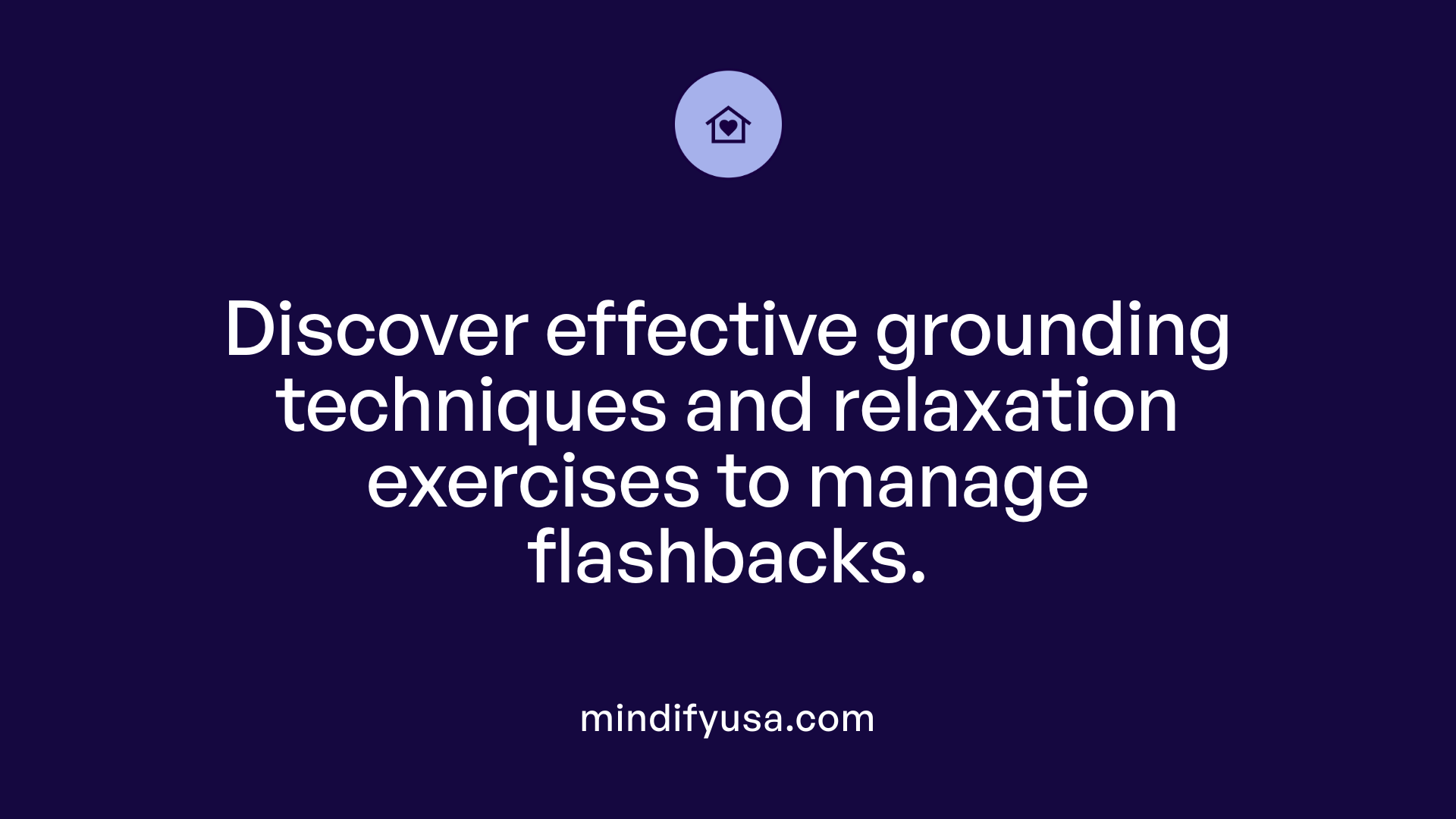
What are effective coping strategies for managing trauma flashbacks?
Managing trauma flashbacks can be challenging, but several practical approaches help individuals regain control and stay grounded. One of the most effective methods is grounding techniques, which involve engaging the senses to anchor oneself in the present moment. This can include focusing on physical sensations such as feeling the texture of an object, actively describing surroundings, or holding onto a familiar item to provide tangible comfort.
Relaxation exercises also play a crucial role. Controlled breathing, such as inhaling slowly for four counts, holding the breath briefly, and then exhaling for six to eight counts, can activate the nervous system's calming response. Progressive muscle relaxation and mindfulness meditation can further help reduce emotional distress and physical tension associated with flashbacks.
Another vital strategy is positive self-talk. Reminding oneself that a flashback is a temporary and involuntary response, and that the trauma is in the past, helps reduce feelings of helplessness. Affirmations like
Grounding Techniques During Trauma Flashbacks
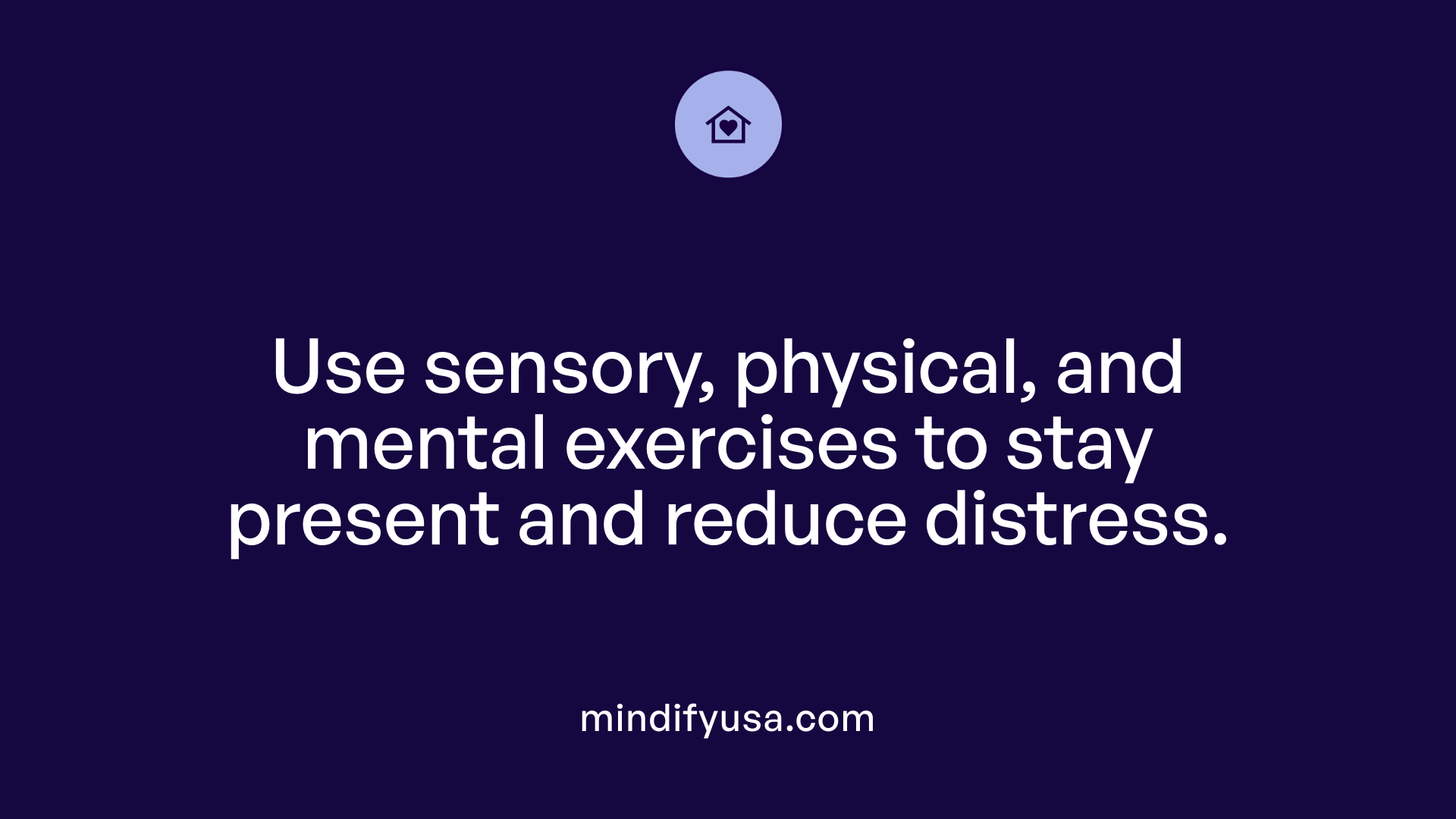 During traumatic flashbacks, grounding techniques are practical tools that help individuals reconnect with the present and reduce distress. These techniques engage the senses, the body, and the mind to counteract feelings of dissociation and emotional overwhelm.
During traumatic flashbacks, grounding techniques are practical tools that help individuals reconnect with the present and reduce distress. These techniques engage the senses, the body, and the mind to counteract feelings of dissociation and emotional overwhelm.
Sensory Engagement Exercises involve focusing on the five senses. For example, observing familiar sights, such as a specific object or color in the room, can create a sense of safety. Listening to calming sounds like nature music or the hum of a fan can redirect attention away from distressing memories. Smelling soothing scents such as lavender or peppermint can also ground a person, as can tasting something mild, like a sip of water or a chewable mint. Tactile sensations—like feeling the texture of a soft fabric or holding onto a textured object—provide immediate, tangible contact with the present moment.
Physical Grounding Methods involve movements and physical activities that realign the body. Standing firmly with feet planted on the ground, stretching, or gently stamping feet can help reconnect the nervous system to the present. Touching objects like a stress ball, a piece of ice, or a piece of jewelry helps reinforce the physical connection to reality. Sitting upright and practicing rhythmic movements, such as rocking or slow arm swings, also aid in calming hyperarousal.
Mental Exercises serve as distraction techniques aimed at shifting focus away from traumatic memories. Counting or reciting details about the environment—like “I see three blue chairs” or “The clock ticks five times”—can help redirect thoughts. Other mental strategies include imagining a safe place, mentally listing colors or objects, or playing simple games like mentally listing animals or objects starting with specific letters. Listening to nature sounds or using visualizations of peaceful scenes can further help in anchoring the mind.
Using a combination of these grounding methods during a flashback can significantly decrease feelings of panic and help regain emotional control. Regular practice of these techniques increases their effectiveness, making them more automatic during moments of distress.
Long-term and Self-help Approaches to Trauma Recovery
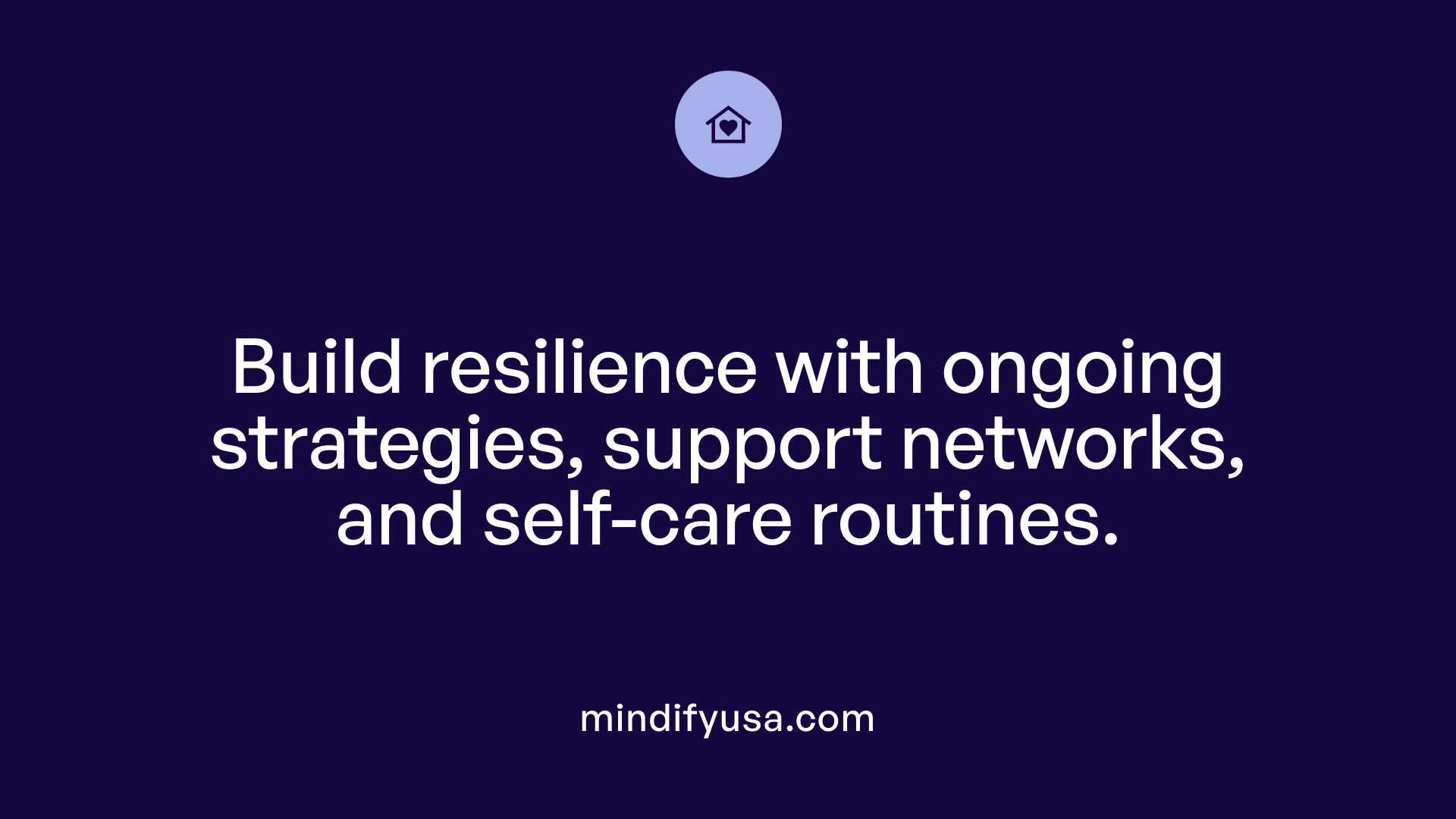
What are long-term management and self-help strategies for adults experiencing trauma flashbacks?
Long-term strategies for managing trauma flashbacks involve developing consistent routines and engaging in ongoing therapy that targets trauma and helps build resilience. Establishing a daily schedule can provide stability and predictability, making it easier to cope with distressing symptoms.
Therapy options such as trauma-focused cognitive behavioral therapy (TF-CBT), EMDR (Eye Movement Desensitization and Reprocessing), and other psychological interventions are effective in processing traumatic memories and reducing their hold over time. These therapeutic methods aid individuals in understanding their reactions, recognizing triggers, and adopting healthier coping mechanisms.
Grounding techniques are vital self-help tools. Describing one's surroundings, using physical reminders like meaningful objects, and carrying items that provide comfort can help maintain presence during flashbacks. Incorporating relaxation exercises, including deep breathing, progressive muscle relaxation, and mindfulness practices, supports emotional regulation and alleviates physical symptoms like rapid heartbeat or trembling.
Social support plays a crucial role in recovery. Staying connected with trusted friends, family, or support groups reduces feelings of isolation and provides reassurance. Learning about trauma responses and creating personalized coping plans—such as planning for triggers or practicing quick grounding methods—empowers individuals to handle episodes more independently.
Overall, combining therapy, routine development, grounding techniques, self-care, and support networks helps facilitate long-term recovery and reduces the frequency and severity of flashbacks.
The Importance of Education and Professional Guidance in Managing Flashbacks
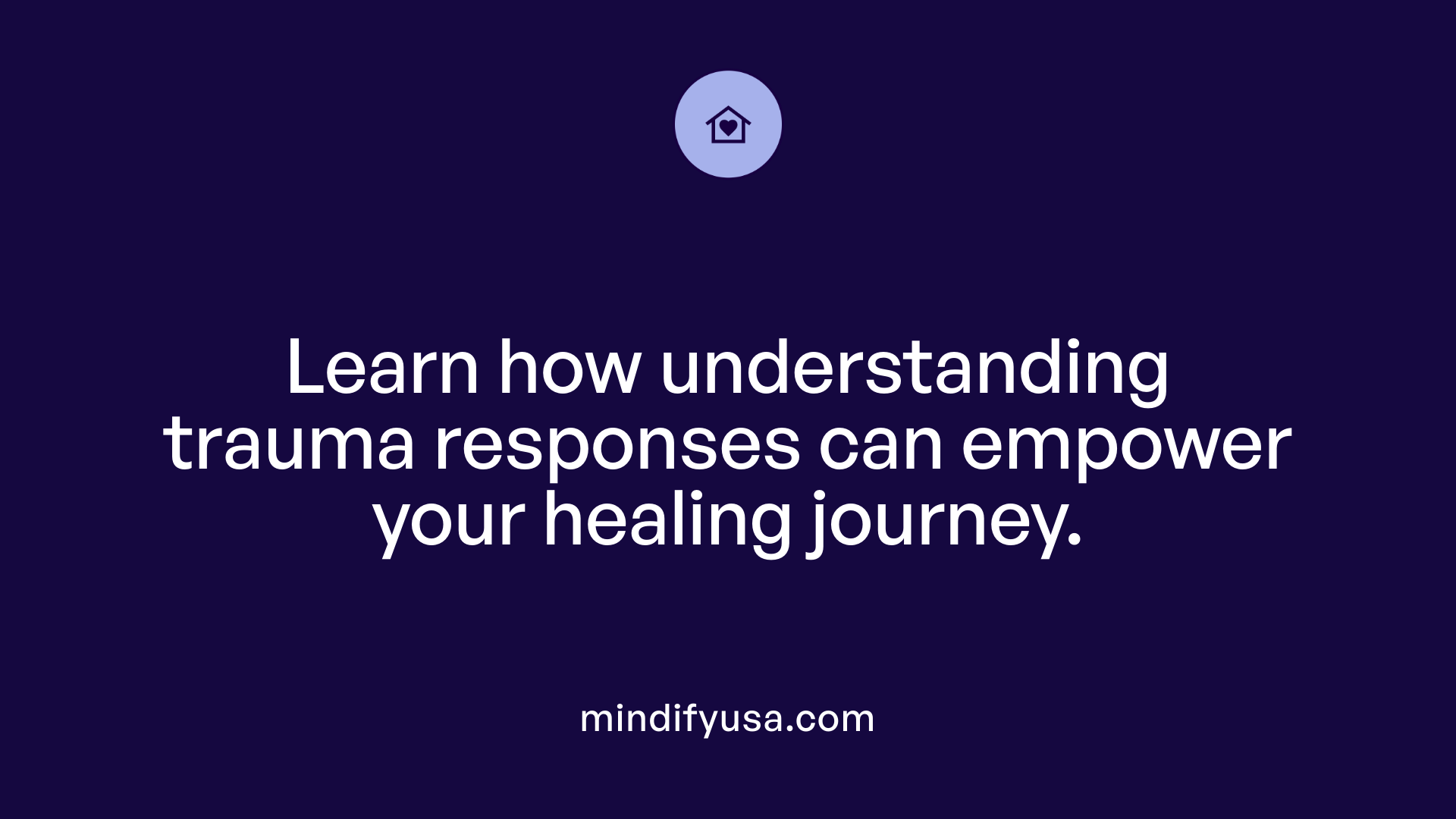 Understanding trauma-related flashbacks can significantly improve how survivors manage these intense episodes. When individuals are aware that flashbacks are involuntary re-experiences of past trauma, they can better recognize the signs and triggers that lead to these overwhelming feelings. Common triggers might include specific sights, sounds, or smells associated with the traumatic event, which activate the limbic system—responsible for emotional processing—and cause vivid re-living feelings.
Understanding trauma-related flashbacks can significantly improve how survivors manage these intense episodes. When individuals are aware that flashbacks are involuntary re-experiences of past trauma, they can better recognize the signs and triggers that lead to these overwhelming feelings. Common triggers might include specific sights, sounds, or smells associated with the traumatic event, which activate the limbic system—responsible for emotional processing—and cause vivid re-living feelings.
With proper knowledge, survivors learn to employ grounding techniques, such as sensory engagement—focusing on sights, sounds, tastes, or physical sensations—to anchor themselves in the present moment. Techniques like deep breathing, focusing on the five senses, or affirming current safety can help regulate emotional responses and prevent the escalation of distress.
Education about trauma's effects and the brain's response mechanisms fosters a sense of empowerment. Survivors can actively participate in their recovery by understanding their reactions and knowing which tools to use. This proactive approach reduces feelings of helplessness and builds resilience.
Therapeutic approaches such as Trauma-Focused Cognitive Behavioral Therapy (TF-CBT), Eye Movement Desensitization and Reprocessing (EMDR), and other evidence-based treatments are tailored to help process traumatic memories and develop coping strategies.
Accessing professional support through mental health specialists, trauma-informed therapists, and trusted organizations provides essential guidance. Resources like crisis helplines, support groups, and mental health apps complement therapy by offering immediate assistance and education.
Overall, education paired with professional support empowers survivors to manage flashbacks more effectively, fostering recovery and emotional stability.
Professional Treatments and Resources for Trauma Management
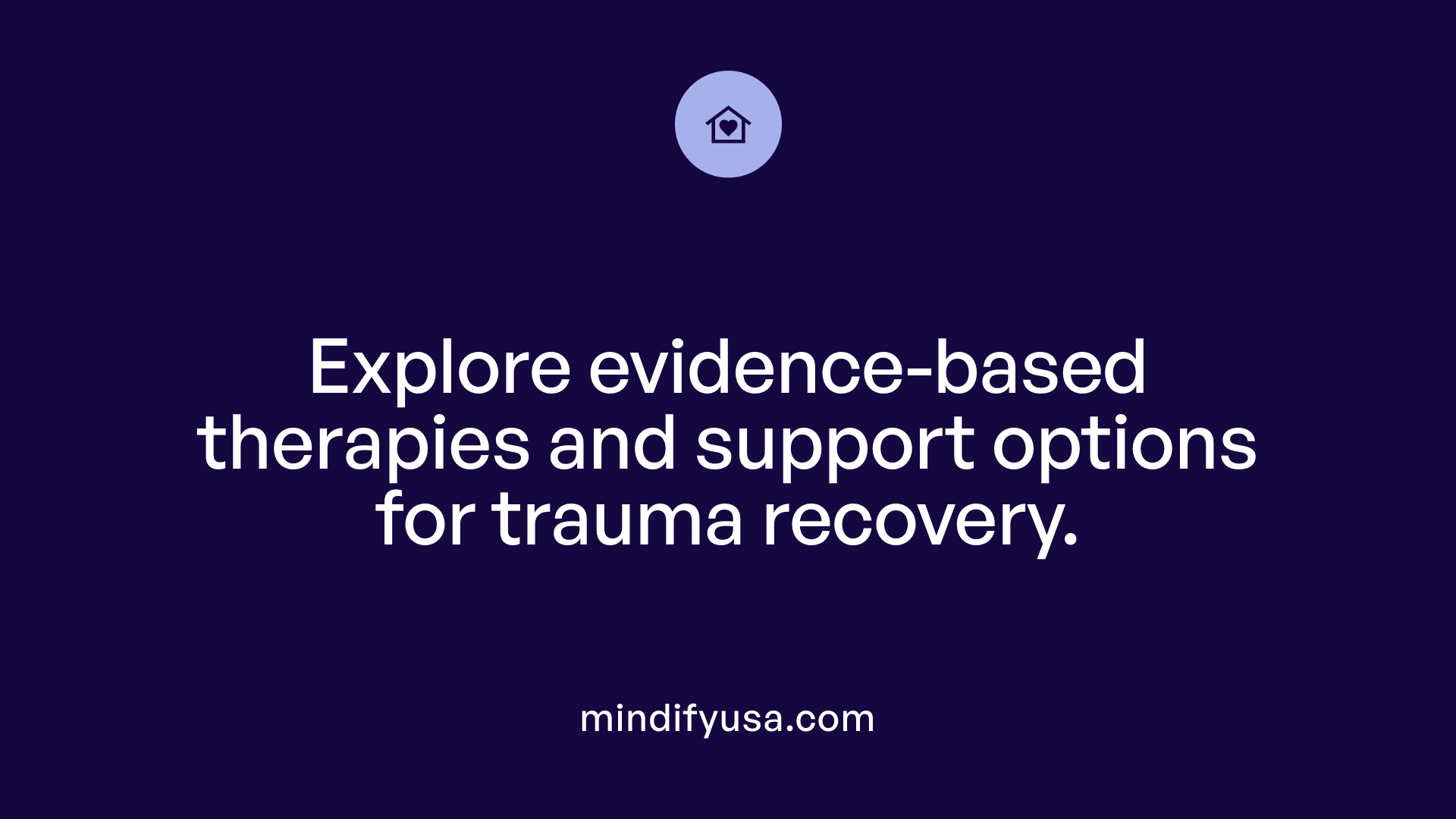
What professional guidance options are available for managing trauma flashbacks?
Managing trauma flashbacks often requires professional support tailored to the individual's needs. Evidence-based psychotherapies like trauma-focused cognitive-behavioral therapy (TF-CBT), prolonged exposure therapy, and cognitive processing therapy are highly recommended. These therapies, supported by clinical guidelines such as those from the American Psychological Association, help individuals understand their trauma responses and develop coping strategies.
In addition to therapy, medications are sometimes prescribed to mitigate symptoms like flashbacks, anxiety, and sleep disturbances. Common options include antidepressants such as sertraline and paroxetine, which can help regulate mood and anxiety levels. In particular cases, medications like prazosin may be used to reduce nightmares associated with PTSD.
Healthcare providers adopting a trauma-informed approach consider personal backgrounds, cultural contexts, and systemic factors. They aim to create a safe, supportive environment where clients can process their trauma.
Various professional organizations, including the American College of Surgeons and the American Psychological Association, provide updated guidelines and protocols. These resources assist clinicians in delivering effective, evidence-based trauma care.
An integrated, multidisciplinary approach—combining therapy, medication, peer support, and holistic tactics—can significantly improve trauma recovery. Early intervention and continuous support are vital in helping individuals manage flashbacks and rebuild a sense of safety and stability.
| Treatment Type | Description | Supporting Guidelines | Additional Notes |
|---|---|---|---|
| Psychotherapy (TF-CBT, CPT) | Structured therapies to reprocess trauma memories | APA, NICE | Focuses on modifying thoughts and exposure to trauma cues |
| Medications | Drugs to reduce symptoms like anxiety and nightmares | NICE, APA | Includes antidepressants, prazosin, and others |
| Support Organizations | Groups providing peer and professional support | PTSD UK, SAMHSA | Offer resources, helplines, and community programs |
| Digital Tools | Apps and online resources for self-help | PTSD Coach, Mind App | Facilitate grounding, relaxation, and education |
Seeking professional guidance and utilizing available resources is crucial for effective trauma management, enabling survivors to regain control and improve their quality of life.
Empowering Self-Care and Professional Support
Managing trauma flashbacks involves a combination of understanding, practical tools, and professional guidance. By familiarizing oneself with grounding techniques, relaxation exercises, and recognizing triggers, adults can effectively connect with the present moment and reduce distress. Incorporating routine self-care practices and seeking therapeutic support paves the way for increased resilience and recovery. Education about trauma responses further empowers individuals to manage symptoms proactively. Ultimately, a holistic approach—integrating evidence-based therapies, medication, and community support—can significantly improve quality of life for those affected by trauma-related flashbacks, fostering long-term healing and emotional stability.
References
- 7 Tools for Managing Traumatic Stress | NAMI
- 4 Tools to Cope with Flashbacks - Beauty After Bruises
- 13 Steps for Managing Flashbacks - Pete Walker, M.A. Psychotherapy
- Coping with Traumatic Stress Reactions - National Center for PTSD
- Resources: Managing Flashbacks Guide - PTSD UK
- Managing PTSD Flashback: 5 Effective Strategies
- Managing Flashbacks | Tools for Trauma Recovery - Saprea
- 4 Tools for Coping with Flashbacks After Trauma - Burning Tree Lodge
- Self-care for PTSD | Types of mental health problems - Mind
- [PDF] Coping with Flashbacks, Nightmares and Intrusive Thoughts












